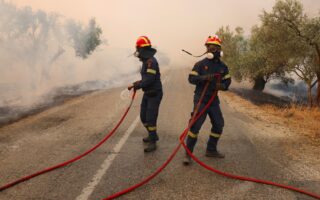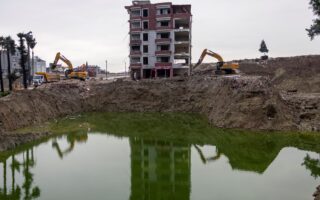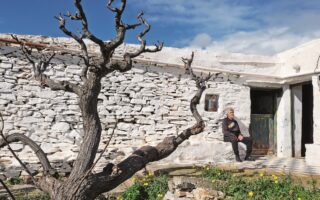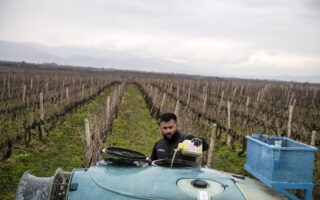Water shortages a looming threat for Greek isles
The combination of increased consumption and prolonged drought is depleting resources in the Cyclades
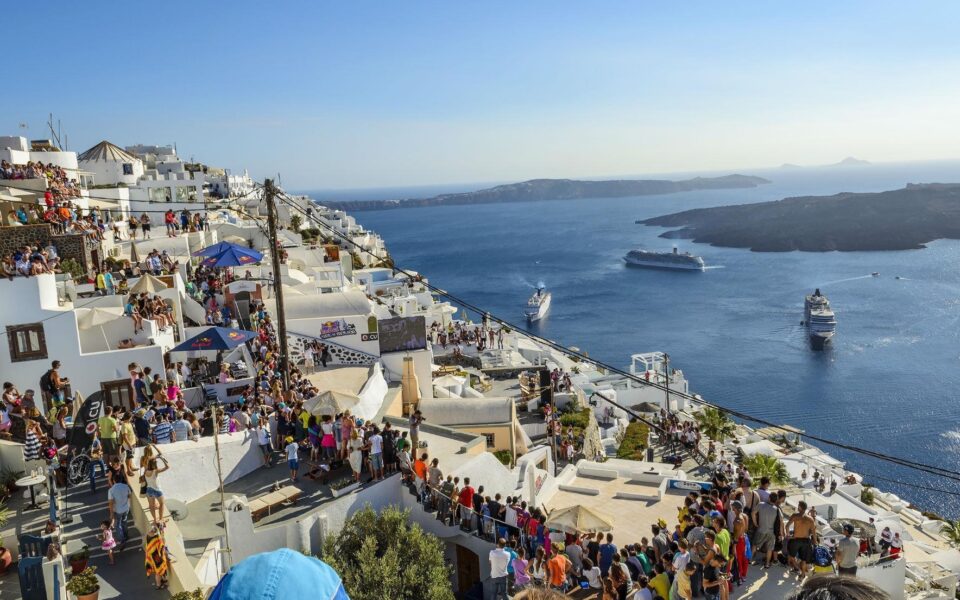
Year after year, the pressure increases. On the one hand, there is the explosive growth of tourism, followed by an increase in consumption; on the other, there is drought. The small Aegean islands are preparing for the start of the tourist season with their reservoirs empty, their boreholes pumping brackish water, and an increasing dependence on desalination. The first victim of this difficult situation is what agricultural production is left on the islands, according to the doctrine of “water for the people first and then everything else.”
In 2023, rainfall in the Aegean will be limited for a third consecutive year. “Especially in the Cyclades and southern Crete, which are the areas with the least rainfall, 2023 was a bad year,” explains Kostas Lagouvardos, meteorologist and research director at the National Observatory of Athens. “The last good year for the Aegean was 2019, with a lot of rain in the east and south. Since then, rainfall has been below average. Especially in the Cyclades, where the rainy season lasts only five or six months, it only takes two bad years to create a problem.” In 2023 Andros received 363 millimeters of rain, compared to an average of 506 mm, Tinos received 299 mm, compared to an average of 330 mm, Naxos received 270 mm, compared to an average of 306 mm, and Ios received 195 mm, compared to an average of 285 mm.
As a result, the Aegean islands are preparing for a difficult year. “The reservoirs on the islands are empty. Many islands will have problems this year. And the first victims will be crop growers and livestock breeders. If it doesn’t rain, there is no vegetation, so the farmer has to buy fodder. Last year the farmers of Naxos bought bales of clover from Bulgaria,” explains Ilias Nokas, head of the Directorate of South Aegean Water at the Decentralized Administration of the Aegean.
“Naxos has two dams. Last year they had 375,000 cubic meters of water, this year they have 30,000 cubic meters of water,” says Dimitris Lianos, mayor of the island. “We’re going to struggle this year. It’s not just tourism that’s important to us, but also agriculture and livestock farming. The first to be affected are the farmers. Potato farmers are already thinking of not planting this year because they will not be able to water their crops. It will be a difficult year for everyone. However, compared to most of the Cyclades islands, Naxos is still in a better position. “The island has water, we have two boreholes at a depth of 171 meters with very good quality water and the level has not dropped. What the island needs is a master plan for water supply. Unfortunately, because of localism, we cannot make more rational use of the water supply – some villages exploit springs and do not allow others to be supplied with water. The town of Naxos now has a desalination plant. We also need irrigation networks and targeted policies for farmers and livestock farmers so that they do not give up; the primary sector is our added value.”
Mykonos
On islands where meeting the needs of tourism is the only priority, empty reservoirs aggravate an already difficult situation. Mykonos is a typical example. “The Municipal Water Supply and Sewerage Company of Mykonos has two dams and two desalination plants to supply water to the island,” explains the company’s chairman, Dimitris Lazaridis. “The Marathi dam, with a capacity of 3 million cubic meters, and the Ano Mera dam, with a capacity of 1 million cubic meters, are almost empty due to the continuous drought, and they are not being used.”
‘The reservoirs on the islands are empty. Many islands will have problems this year. And the first victims will be crop growers and livestock breeders’
Drought is not the only problem. The Aegean islands have seen a surge in tourism in recent years, with a corresponding increase in water consumption. A typical example of the gradual increase in water consumption is the arid island of Santorini. According to data from the Municipal Enterprise for Water Supply and Sewerage (DEYA) of Thera, a decade ago (2013), water consumption on the island reached about 929,000 cubic meters. In 2023, it reached 2.36 million cubic meters of water (an increase of 13.8% compared to the previous year).
The huge increase in consumption is also reflected in the other “flagship” of the Cyclades, Mykonos.
According to data from the Mykonos DEYA, the consumption of water in 2020 (year of quarantine) was 955,505 cubic meters, in 2021 it increased to 1,174,254 cubic meters (+22.9%), in 2022 to 1,513,068 cubic meters (+28.8%), and reached 1,618,069 cubic meters in 2023 (+7%). In other words, if we consider that 2020 was not an ordinary year due to Covid-19, water consumption on Mykonos will increase by 37.8% in two years (from 2021 to 2023). “Moreover, the DEYA data does not reflect the whole picture, as 40% of the island is not covered by the water supply network. The total water consumption of the island is estimated at 2.5-3 million cubic meters per year,” Nokas said. “Like many islands, Mykonos is a place where people build where they want and then meet their needs either with private boreholes – which are overpumped, resulting in poor quality water – or by buying water. However, the increase in consumption also affects the areas that have networks because they are not properly designed. On Mykonos, for example, the network was originally built to serve only Hora, the island capital, and now supports all the outlying areas without any specifications. The island’s biological treatment plant, which was designed for a population equivalent of 50,000 and serves over 100,000 in the summer, has a similar problem. Everything is operating at capacity.”
Challenges
The administrative structure – i.e. the division of responsibilities for water – does not help the situation. Water management on the Greek islands is governed by a complex and deficient system. In the most organized cases, there is a municipal water and sewerage company responsible for the network and water production. In the less organized cases, the water is managed by an agency within the local municipality. The licensing and control of private wells, either for water supply or irrigation, drilled outside the network, is the responsibility of the water directorates of the decentralized administrations, where one or two people are called upon to manage everything. Finally, the regions have water management departments that deal with inspections and complaints.
“When it comes to water consumption, tourism has the last word,” says Nokas. Desalination is not enough. In Ermoupoli, on the island of Syros, when the first plant was built, it had a capacity of 1,200 cubic meters, and today it has reached 5,000 cubic meters, and it is still not enough. Moreover, with the increase in energy costs, the island’s DEYA, which a few years ago had a reserve of 1 million euros, is now 5 million euros in the red, which it cannot pass on to the water bills, since water is already very expensive. According to the Ministry of the Environment and Energy, there are currently 31 desalination plants in operation in the Cyclades and another 15 in the Dodecanese.
Illegal drilling
The problems are not confined to the Cyclades. On Skiathos, which is supplied exclusively by boreholes, the underground water level is falling every year. “The peculiarity of Skiathos is that we have water, the island is self-sufficient. The town of Skiathos is supplied by five municipal wells, while hotels and private individuals on the island have their own wells. In addition, since the water from the central well is no longer potable, we have installed 25 public taps in the town with potable water from another source,” says Ioannis Sarris, director of the Skiathos DEYA.
“The DEYA has no authority to license or control the wells. It has no idea what quantities are being pumped. We have done the best we can – in recent years we have replaced almost the entire internal water supply network and significantly reduced losses. What worries us is that every year the level of the water in the boreholes goes down, and the reserves tend to go down. At the same time, actual consumption is increasing due to tourism. A serious problem is illegal drilling – on Skiathos we have more than 2,000 illegal boreholes. In my opinion, especially on islands where the water comes from an enclosed area, the water should be controlled by the community as a whole and not piecemeal.” According to the Department of Hydroeconomics of the Regional Unit of Magnesia and the Sporades, 238 applications for private wells have been submitted for Skiathos, 11 for Skopelos and five for Alonissos.
“Our island has the peculiarity of being big and small at the same time,” notes Kalymnos Mayor Yannis Mastrokoukos. “Although we are small in area, we have a permanent population of 17,000. This means that we have a significant demand for water throughout the year. It’s not just about tourism, as our own attitude toward water has changed: in terms of using it for cleaning, watering gardens, filling swimming pools… things that were unthinkable two generations ago, when people had learned to live with much less water.” The island is currently supplied mainly by boreholes, and there is a desalination plant for the northern part of the island which is popular with tourists.
He concludes: “The underground reserves are running out and we are now forced to turn to desalination as well. There is already a tender being prepared, funded by the Ministry of the Interior, for the supply of three small desalination plants and another by the Regional Authority of the South Aegean for a large plant for the town of Kalymnos. Of course, desalination is not a panacea. Ideally, if we could expand the use of renewables to meet the demand and make up for grid leakage, it would be more viable as an option.”
